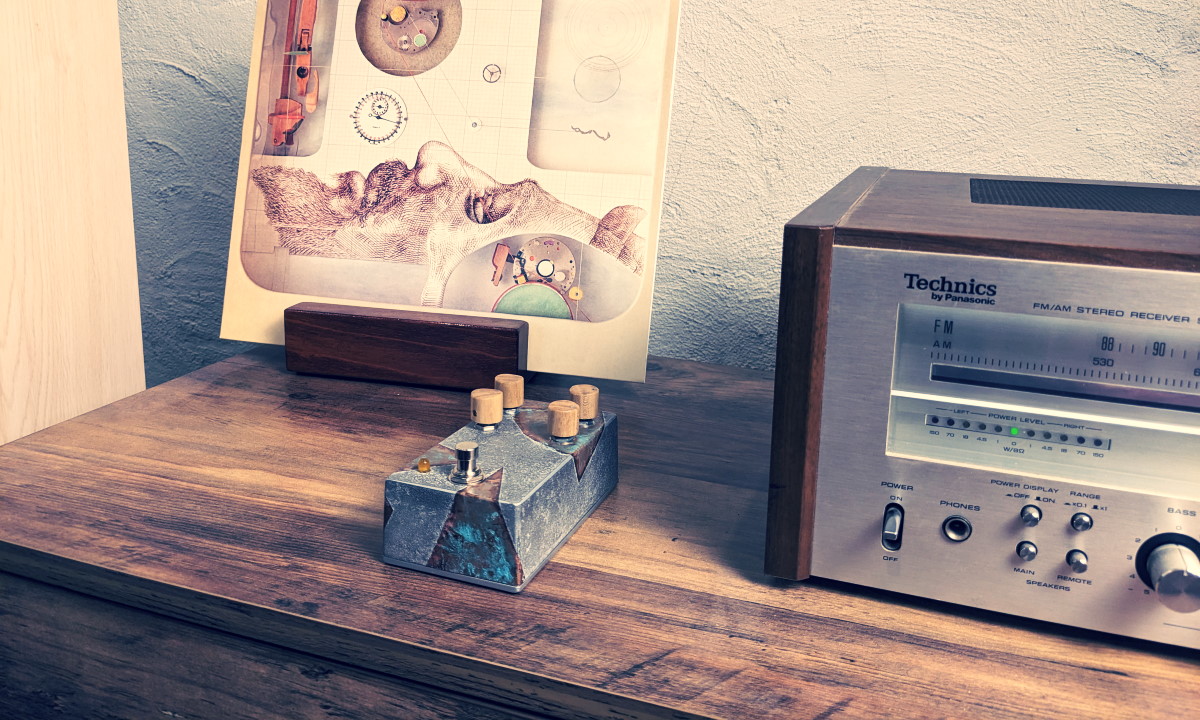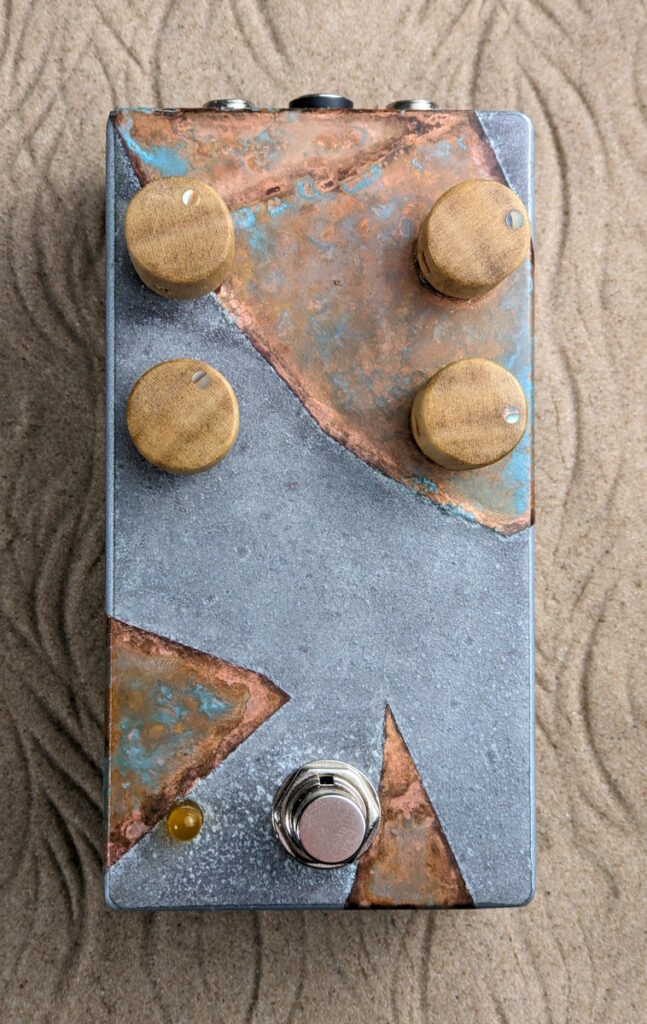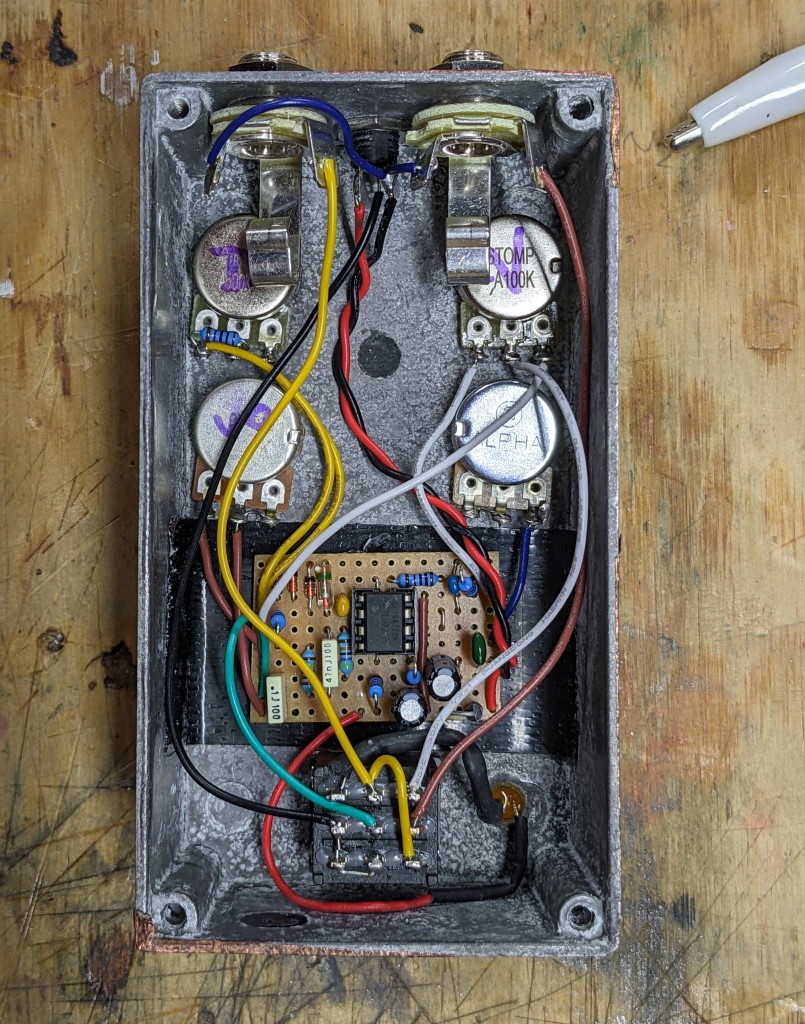

The Zen Master
Nieu Oldstock, a tone master, received a university professor who came to inquire about tone.
Nieu Oldstock put on some Ray-Bans and ran a comb through his hair exactly once before returning it to his pocket. He then grabbed a priceless vintage Gibson and started strutting around with it, making confused and pained faces like he’d just realized that he had regained consciousness in a dumpster behind a Chinese restaurant. He was not actually playing the guitar, which wasn’t even plugged in.
The professor watched as he clambered up onto a pile of Dumbles, kicking a stack of Klon Centaurs onto the floor in the process. He continued molesting the neck of the guitar without making any noise, flailing his body and twisting his sweaty face as if was trying to get on the cover of The Ecstasy of Stank magazine. The professor could no longer restrain himself. “You’re not even playing the guitar! When are we going to stage a gain?”
Nieu Oldstock stepped down from the amplifiers. “As Deee-Lite said, the tone is in the heart. No, wait, that’s ‘groove.’ Shit. Never mind.”
The professor looked at him blankly.
“Hold on. Uh…if a solo falls in a forest and no one is around to hear it, does it have tone? Is that a thing?”
And then the professor realized that he had tone all along.
Zen koans can be mediocre, and so can guitar pedals. Zen(ish) is a recycled case containing a recycled idea, and I’m not sure if it would make a serious tonelord weep, but it works, and I had a larger hand in tweaking the circuit than usual.
Details
There was a guy named Alexander “Howard” Dumble who made guitar amps. He made them in low quantities, and their rarity and tonal renown make them among the most expensive amps in the world, sometimes going for six figures. I’ve never heard one in real life (perhaps obviously) but they’re so high up on the list of magical guitar gear that they spawned their own word to describe their sound: dumblesque. I’m not sure what that means, or even if it could mean anything since Dumbles were inconsistent and highly customized for individual players, but a lot of guitar players want dumblesque gear.
There have been several pedals that tried to get that sound, including the Zen Drive. Since I’ve never heard either a Dumble or a Zen Drive, I can’t vouch for how dumblesque it is, but several Dumble players like them—even though I don’t understand why someone with an actual Dumble would also need a Dumble-flavored pedal. Is it Double-Dumble?
I wasn’t familiar with this pedal until I happened upon a schematic of it online. I have no idea how accurate it was, but it wasn’t complicated and was similar to a bunch of other op-amp-based soft clippers that I basically understand. I thought I might try to do the thing that dylan159 does and replace all of the oddball parts with common parts and make it work (the major difference being that dylan159 actually understands electronics and I don’t), so I naively breadboarded it using only parts that I had on hand. It worked, and then I mildly messed with things to tweak it at bit. The schematic that I found called for an AD712 op-amp, had MOSFETs set up like diodes in the clipping section, and the input cap set up a high pass filter that went all the way down to 7Hz. I redid it with a TL072, common diodes, and tweaked values for some of the filtering. I also drew up my own schematic like a big boy and did the stripboard layout in software before committing to the “start soldering and hope it works out” method. I may have snuck in one weird germanium diode at the end because I had one left over from building Fuzzy Bunny and I thought it made it interesting with a little asymmetrical clipping.
The enclosure is also a radical departure from my usual style, which was both a quirk of fate and a Zen-like acknowledgement of the transience of all things. When I built the Vacuous reverb, I originally had it in a 125B (i.e., “normal”) case, but eventually moved it to a 1590BB (i.e., “big boi”) to accommodate the runaway footswitch that I added. That left me with an unused enclosure. I kept thinking that I’d eventually build another pedal with the same knob and switch layout and get to reuse it, but finally reached “acceptance.” For Zen(ish), I took a shot at filling the unnecessary holes with hardware store epoxy thickened with marine-grade colloidal silica, which worked out far better than I expected. The one downside is that it was still Swiss cheesed as a Faraday cage, so I went to my stockpile of copper foil offcuts from shielding electric guitar cavities. I slapped them on and attempted to achieve a balance between making them look wabi-sabi while making sure to cover the epoxy holes and connect to ground. I then aged them with a slurry of plant food, with mixed results. I also made my own knobs for it from poplar with brass inserts and inlaid abalone indicators, which took about 97% of the total time spent on this project. This absolutely does not mark a turning point in my enclosure design and I will return to decals (with labels) as soon as possible, but it was fine for a one-off with a Zen(ish) theme.
Vital Stats
Sound
Zen(ish) is a medium gain pedal. Maybe slightly less than medium. It will not go crazy, but has a lot of flexibility in the “smooth” range of overdrives. The first time I played it, it actually reminded me a lot of the mild overdrive on Steely Dan’s The Royal Scam, for example.
The knobs are volume and gain, which are standard. There is a tone knob that is a basic first order low pass in between the two op-amp stages, and there is also a “voice” knob that simultaneously messes with the bass response and also the gain. The voice knob is kind of the selling point, and allows for a range of sounds.
The following sample is the Coronacaster, running through both a Fender-flavored DI and a Vox-flavored DI (both set pretty clean) for those That Pedal Show blues-rock feelings. There are three guitar parts, one with the gain down, one with the gain up, and then another with more gain and a different setting of the voice knob. The Monotonous Delay also makes an appearance, and is providing most of what sounds like reverb.







